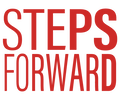|
Facilitation Tools
|
|
Facilitation vs Personal SupportIt can be challenging to think about 'our job' vs the job of a traditional role of personal support. The following are some examples of how to distinguish between the two. Because we are supporting individuals we must always think about what works for that person; there are no cut and dried 'we won't do that' or 'we don't do that' (unless the thing we are doing is 'putting them in a special classroom').
Example: A student is putting their hand up frequently in class to ask questions that are not necessarily relevant to the topic.
Example: A student has procrastinated on their assignment. The support recognizes that they will probably not get it done in time.
Think About:
Process Steps
Beth Mount's TEDX presentation below is well worth watching Developing Allies
Throughout facilitating inclusion, we will meet people who are allies, potential allies, and people who see things really, really differently from the way we do. For people who are potential allies or who see things really differently, we recognize that coming to a full understanding of inclusion and all its complexities will take many conversations over time. Sometimes, who is an ally and who is not is surprising, but we have found it beneficial to think about who in the community might be an ally when making requests for employment or support for changes to 'the system.' Example: When exploring employment for an alumni who wanted to work as an educator, we started by seeking out alternative schools who expressed values of inclusion as a part of their mandate as a school. However, we also started more long-term conversations with members of the public school board who would have the ability to make changes to the hiring practices, or figure out ways around current policy, in order for her to seek employment in the public school system as well, but we recognize that this is a multi-year conversation. Marsha Forrest, a leader in the Inclusion movement in Canada, suggests there are ten key areas of focus that will help to move our agenda forward. Being able to articulate the importance of some of these will be helpful when you are speaking to various stakeholders about inclusion and they have the moment of recognition that the perspective that we have for inclusion may challenge ways of thinking about disability in society. 10 Key Points of Focus:
Next: Conclusion
|
